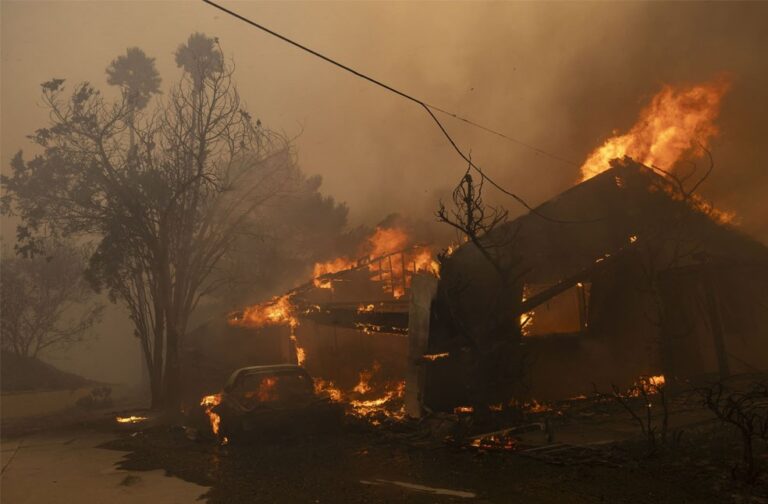California: Thousands of residents have been ordered to evacuate parts of California as a devastating wildfire continues to spread.
The blaze, which was first reported near Moorpark—about 40 miles northwest of Los Angeles—has been fueled by strong winds.
Governor Gavin Newsom confirmed that over 10,000 evacuation orders have been issued, with 3,500 homes and other structures at risk. Federal funds have been allocated to assist in firefighting efforts.
The National Weather Service forecasts a significant drop in wind speeds by Thursday night, but cautioned that conditions for heightened fire risk will remain in effect.
Ventura County Fire Chief Dustin Gardner warned that the wildfire is advancing “dangerously fast and consuming everything in its path, bushes, grass, hedgerows, agricultural fields, and structures are all burning.”
Fire officials reported that two individuals suffered from apparent smoke inhalation and were hospitalized, though no major injuries were reported among firefighters.
In response to the crisis, officials in several southern Californian counties have urged residents to remain vigilant about rapidly spreading fires, power outages, and fallen trees.
During an emergency, knowing the difference between an evacuation warning and an evacuation order is critical.
Visit https://t.co/0jVyrfQgmh to learn how to sign up for alerts in your county. pic.twitter.com/4YlM13o4oM— California Governor's Office of Emergency Services (@Cal_OES) November 7, 2024
The City of Ventura also appealed to residents, urging them to conserve water to ensure sufficient supply for firefighting efforts.
The fire ignited during a Santa Ana wind event, characterized by strong, dry winds often dubbed “devil winds.”
Forecasters reported gusts reaching 70 to 80 mph in parts of Los Angeles County. The blaze rapidly expanded, growing from less than 0.5 square miles (1.2 sq km) to over 16 square miles (62 sq km) in just five hours.
California, a state prone to wildfires, has seen a dramatic rise in burned areas. Between 1996 and 2021, the amount of land scorched in northern and central California during the summer increased fivefold compared to the previous 24-year period, with scientists attributing much of this trend to human-caused climate change.
While not all wildfires can be directly linked to climate change, the science behind it is complex. Human factors, including land and forest management, also play a role. However, scientists agree that climate change is increasing the likelihood of conditions conducive to wildfires, such as heat and drought.



